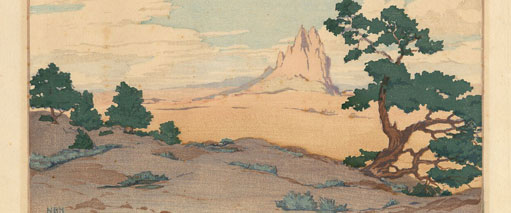Culture Shock:a Line Carved Through Time
Exhibition And Book Illuminate Block Printmaking In New Mexico


"Shiprock, New Mexico, 1940" by Norma Bassett Hall
Museum of New Mexico Press

"Cordova, 2006" by Thayer Carter
Museum of New Mexico Press








